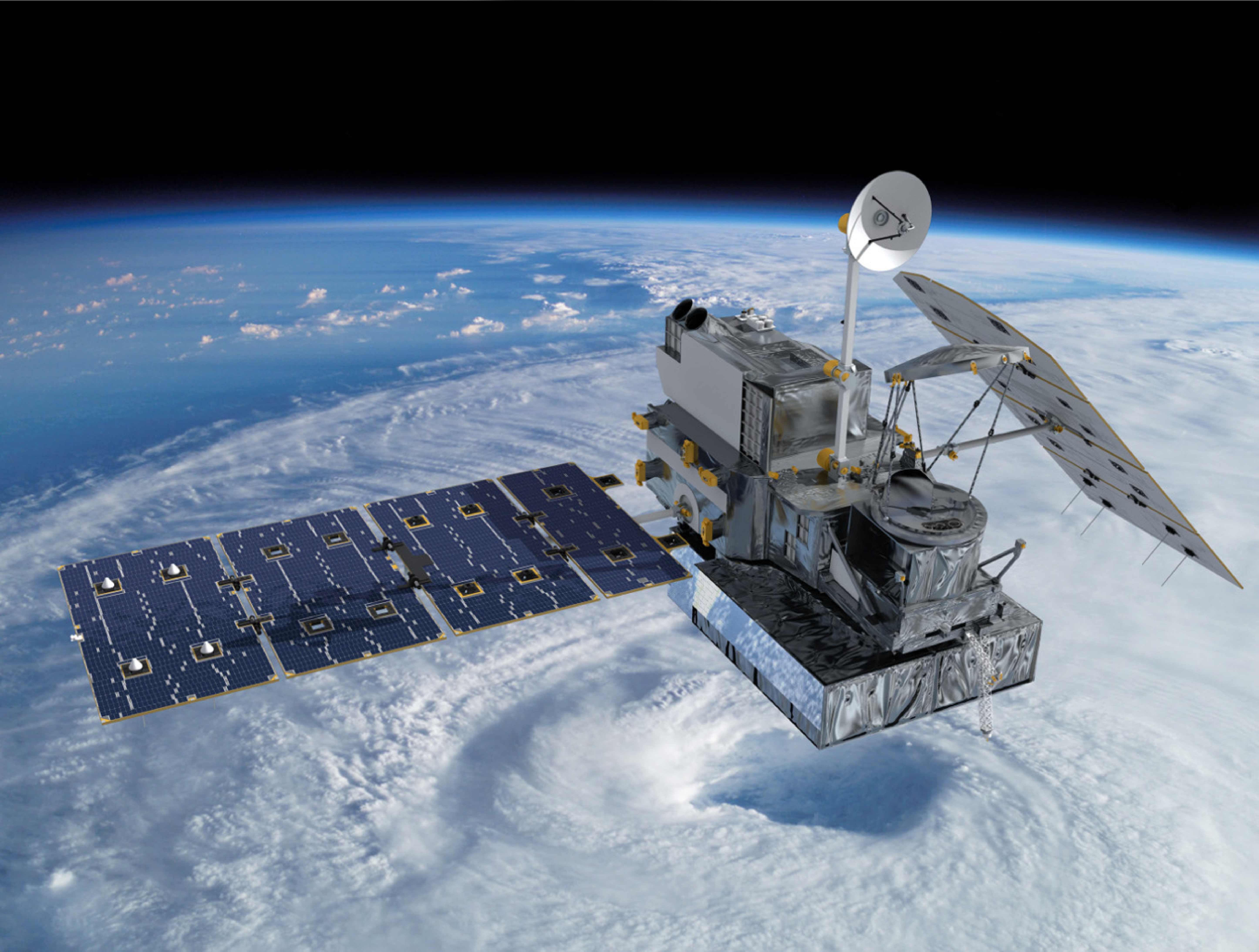Method and Associated Apparatus for Capturing, Servicing, and De-Orbiting Earth Satellites Using Robotics
robotics automation and control
Method and Associated Apparatus for Capturing, Servicing, and De-Orbiting Earth Satellites Using Robotics (GSC-TOPS-182)
Making Satellite Servicing a Reality
Overview
Engineers at the Goddard Space Flight Center have overcome limitations plaguing the satellite sector since its inception through the development of a robotic systems allowing for the autonomous capture and servicing of in-orbit satellites. By enabling spacecraft to identify, pursue and attach to a target satellite this innovation will make possible satellite inspection, repairing, refueling, and upgrading. The major benefits provided by this technology will be of great interest to the commercial satellite sector.
The Technology
This method begins with the optical seeking and ranging of a target satellite using LiDAR. Upon approach, the tumble rate of the target satellite is measured and matched by the approaching spacecraft. As rendezvous occurs the spacecraft deploys a robotic grappling arm or berthing pins to provide a secure attachment to the satellite. A series of robotic arms perform servicing autonomously, either executing a pre-programmed sequence of instructions or a sequence generated by Artificial Intelligence (AI) logic onboard the robot. Should it become necessary or desirable, a remote operator maintains the ability to abort an instruction or utilize a built-in override to teleoperate the robot.

Benefits
- Increased satellite lifetime
- Lowered costs due to decreased satellite turnover rates
- Decreased satellite insurance rates
Applications
- Satellite Servicing
- Robotics
- Communications
- Earth Remote Sensing
- Defense
Similar Results

Computer Vision Lends Precision to Robotic Grappling
The goal of this computer vision software is to take the guesswork out of grapple operations aboard the ISS by providing a robotic arm operator with real-time pose estimation of the grapple fixtures relative to the robotic arms end effectors. To solve this Perspective-n-Point challenge, the software uses computer vision algorithms to determine alignment solutions between the position of the camera eyepoint with the position of the end effector as the borescope camera sensors are typically located several centimeters from their respective end effector grasping mechanisms.
The software includes a machine learning component that uses a trained regional Convolutional Neural Network (r-CNN) to provide the capability to analyze a live camera feed to determine ISS fixture targets a robotic arm operator can interact with on orbit. This feature is intended to increase the grappling operational range of ISSs main robotic arm from a previous maximum of 0.5 meters for certain target types, to greater than 1.5 meters, while significantly reducing computation times for grasping operations.
Industrial automation and robotics applications that rely on computer vision solutions may find value in this softwares capabilities. A wide range of emerging terrestrial robotic applications, outside of controlled environments, may also find value in the dynamic object recognition and state determination capabilities of this technology as successfully demonstrated by NASA on-orbit.
This computer vision software is at a technology readiness level (TRL) 6, (system/sub-system model or prototype demonstration in an operational environment.), and the software is now available to license. Please note that NASA does not manufacture products itself for commercial sale.

Robotic gripper for satellite capture and servicing
The Gripper is located at the end of a robotic system consisting of a robotic arm equipped with a Tool Drive or End Effector comprising the input actuator to the Gripper as well as the structural, power and data link between the Gripper and the robotic arm. In a notional concept of operations, a Servicer would approach the Client in an autonomous rendezvous and capture (AR&C) maneuver. When the Servicers sensor suite confirms that the distance, orientation, and relative translational and angular rates with respect to the Client are within an acceptable range, the Servicer enables the grasping sequence, where the robotic arm, equipped with Gripper, extend forward to the Client. When the Gripper/ Servicer sensors indicate that the Client marman ring is sufficiently within the capture range of the Gripper, a trigger signal is sent to the robot control system that commands the End Effector to drive the mechanism of the Gripper and affect closure around the marman ring. The Gripper consists of a pair of jaws which are driven by an internal transmission. The transmission receives input torque from the End Effector and converts the torque to appropriate motion of the jaws.

Spacecraft to Remove Orbital Debris
An approach to mitigating the creation of additional orbital debris is to remove the sources of future medium debris by actively removing large spent objects from congested orbits. NASA has introduced the ADRV, an efficient and effective solution to remove large debris from LEO such as spent rocket bodies and non-functional satellites. The concept yields a single use, low-cost, lightweight, high mass fraction vehicle that enables the specific removal of large orbital debris (1000 - 4000 kg mass, 200 - 2000 km altitude, and 20 98-degree inclination). The ADRV performs rendezvous, approach, and capture of non-cooperative tumbling debris objects, maneuvering of the mated vehicle, and controlled, targeted reposition or deorbit of the mated vehicle. Due to its small form factor, up to eight ADRVs can be launched in a single payload, enabling high impact orbital debris removal missions within the same inclination group.
Three key technologies were developed to enable the ADRV: - 1) The spacecraft control system (SCS) is a guidance, navigation, and control system that provides vehicle control during all phases of a mission; - (2) The debris object characterization system (DOCS) characterizes movement and capture of non-cooperative targets; and - (3) The capture and release system (CARS) allows the vehicle to capture and mate with orbital debris targets. These technologies can improve the current state-of-the-art capabilities of automated rendezvous and docking technology significantly for debris objects with tumbling rates up to 25 degrees per second. This approach leverages decades of spaceflight experience while automating key mission areas to reduce cost and improve the likelihood of success.

Kodiak 3D Lidar
NASA Goddard Space Flight Center has developed a 3D lidar system that consists of microelectromechanical systems (MEMS) beam steering, high performance reconfigurable computing, and an in-depth understanding of systems level integration. Kodiak combines a 3D MEMS scanning lidar with a long range narrow FOV telescope to produce a flexible and capable space flight ranging system. Also included is SpaceCube-level processing power to host a variety of algorithms enabling sensing and 6 degrees of freedom.

Miniaturized Astrometric Alignment Sensor
The Miniaturized Astrometric Alignment Sensor advances satellite capabilities for astrophysical measurements, necessary for formation flying, relative navigation, and virtual telescope capabilities. The sensor is a single assembly consisting of a small, low powered camera assembly. The sensor detects stellar objects from which both stellar and object tracking are performed. The sensors components consist of a low power camera assembly, interchangeable lenses, camera power supply, and image processing software and algorithms. The system functions by searching and identifying objects in the camera's field of view and tracking the objects against a selected star pattern with a central body of interest in the sensor's field of view.
The Miniaturized Astrometric Alignment Sensor makes it possible to measure a spacecrafts altitude and orientation with respect to known stellar objects. The instrument takes an image of a patch of sky, identifies the stars in that field of view, and compares the field view with a stored star map. The data is processed with a dedicated processor attached to the instrument to spell out the attitude and orientation of a spacecraft.



